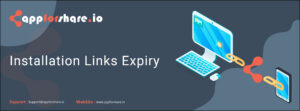Introduction
First of all before we begin anything, let’s take a moment to acknowledge the unsung heroes of the software industry – testers. These software testers test and evaluate new applications and systems, run bug reporting and test documentations and sometimes rely solely on their intuition and attention to detail.
These are the ones who guarantee that the software or an app which you use every day functions flawlessly, whether you’re casually browsing through a social media app or working on critical projects. Without their expertise, the software world would be in disarray. Therefore, let’s appreciate and value the hard work of testers who play a vital role in making our lives easier.
Here at AppforShare, we understand the challenges testers face. It’s not just about ticking boxes off a checklist; it’s a complex dance of intuition, skill, and patience. In our blog, “A Tester’s Guide to Navigating Challenging Software Test Scenarios,” we’re going to shed light on what it really takes to excel in this field. This isn’t your average tech talk – we’re diving into the real-world scenarios that testers encounter, the kind that textbooks don’t prepare you for.
Whether you’re a developer, a project manager, or someone who’s just curious about what happens behind the scenes of software development, this guide is for you. We’re here to share stories, insights, and strategies that can transform the way you approach testing. So, buckle up and get ready to explore the intricate world of software testing – where every bug caught is a disaster averted and every smooth software release is a victory.
Evolution of Software Testing
It is essential to understand the current state of software testing in today’s technology-driven world before delving into specific tactics and strategies for practical testing. Software development has experienced exponential growth, from basic code for simple operations to complex systems that play a significant role in our daily lives. As a result of this evolution, the role of a software tester has undergone significant changes.
Testing used to be a final step in the development process, often rushed and undervalued. Now, it’s an integral part of the development lifecycle, essential for the success of any software product. The shift towards methodologies like Agile and DevOps underscores the need for continuous testing and integration. Testers are no longer just bug hunters; they are gatekeepers of user experience and product quality.
Why is this evolution important? Because the challenges testers face today are far different from those of a decade ago. We’re dealing with highly interactive, user-centric applications that need to perform flawlessly across a plethora of devices and platforms. There’s also a heightened focus on security and data privacy, areas where even minor oversights can lead to significant consequences.
Moreover, the rise of AI and machine learning in software development has introduced both opportunities and challenges in testing. Testers now need to be adept at understanding these new technologies and incorporating them into their testing strategies.
Understanding this backdrop is crucial for anyone involved in software testing. It helps us appreciate the complexity of the challenges at hand and prepares us for the innovative solutions and approaches we need to adopt.
The next sections of my blog will discuss the challenges of adapting to a constantly changing technological landscape and maintaining the security and usability of our software. Best practices such as continuous learning, regular security updates, and user-centric design can help overcome these challenges and ensure optimal software performance.
Embracing Complexity in Modern Testing
As we delve deeper into the art of testing, let’s explore the key aspects that make modern software testing both challenging and exciting. Here, we focus on understanding and managing the complexities inherent in today’s software development.
- Adapting to Agile and Continuous Integration:
- Rapid Development Cycles: Testers must keep pace with shorter development cycles, ensuring quality is maintained despite the speed.
- Continuous Feedback Loop: Agile requires testers to be part of the ongoing development process, constantly providing feedback and adjustments.
- Testing Across Multiple Platforms and Devices:
- Cross-Browser Compatibility: Ensuring software performs consistently across different web browsers.
- Mobile and Desktop Testing: Balancing functionality and user experience on various devices, from smartphones to laptops.
- Dealing with Diverse User Scenarios:
- User Behavior Patterns: Understanding and testing for a wide range of user interactions and behaviors.
- Accessibility Testing: Ensuring the software is usable for people with disabilities, adhering to standards like WCAG.
- Incorporating New Technologies:
- AI and Machine Learning: Learning to test systems that have AI components requires a different approach, often focusing on data validity and algorithmic fairness.
- IoT and Connected Devices: Testing in an IoT environment adds layers of complexity due to diverse device ecosystems and interconnectivity challenges.
- Security and Privacy Concerns:
- Data Protection: Rigorous testing to prevent data breaches and comply with regulations like GDPR.
- Vulnerability Testing: Proactively identifying security vulnerabilities in software before they can be exploited.
- Performance and Load Testing:
- Stress Testing: Assessing how the software behaves under extreme conditions.
- Scalability: Ensuring the application can handle growing amounts of work and users.
In this section, we’ve touched upon the multifaceted nature of modern software testing. These aspects form the core of what makes testing in today’s landscape a challenging yet rewarding endeavor. As testers and quality assurance professionals, understanding these facets is crucial in developing strategies that are robust, flexible, and capable of handling the dynamic nature of software development. In the next section, we’ll dive into how to effectively address and manage these complexities.
Effective Strategies for Complex Test Scenarios
Having outlined the complexities in modern software testing, let’s now focus on the strategies and approaches to navigate these challenges effectively. These tactics not only help in managing the complexities but also ensure the delivery of a high-quality software product.
- Implementing Robust Test Automation:
- Automate Routine Tests: Utilize test automation for repetitive tasks to save time and reduce human error.
- Select the Right Tools: Choose automation tools that align with your tech stack and testing needs.
- Integrating Testing into the Development Lifecycle:
- Shift-Left Approach: Start testing early in the development cycle to identify and fix issues sooner.
- Continuous Testing: Integrate testing into the continuous integration and deployment pipeline for ongoing quality assurance.
- Focusing on User Experience:
- User-Centric Testing: Simulate real-world user scenarios to understand how users will interact with the software.
- Feedback Loops: Incorporate feedback from end-users and stakeholders to continually refine the product.
- Emphasizing Security and Privacy:
- Regular Security Audits: Conduct frequent security assessments to identify potential vulnerabilities.
- Compliance Checks: Ensure testing processes adhere to relevant data protection and privacy regulations.
- Leveraging Data-Driven Testing:
- Test Data Management: Efficiently manage test data to ensure validity and relevance.
- Analytics-Driven Approaches: Use analytics to identify patterns and predict potential problem areas.
- Collaborative Approach and Knowledge Sharing:
- Cross-Functional Teams: Foster collaboration between developers, testers, and other stakeholders.
- Community Learning: Engage with testing communities and forums to stay updated with the latest trends and solutions.
- Handling Performance and Load Testing:
- Realistic Load Scenarios: Create test scenarios that closely mimic actual load and stress conditions.
- Performance Monitoring: Continuously monitor performance metrics to detect and address issues promptly.
- Adapting to New Technologies:
- Up-to-date Skills: Continuously learn and adapt to new technologies like AI, IoT, and cloud computing.
- Experimentation: Encourage a culture of experimentation to find innovative testing solutions for emerging tech challenges.
A Practical Checklist for Navigating Complex Test Scenarios
This checklist serves as a practical guide, offering clear steps for each key strategy to manage complex test scenarios effectively.
| Checklist Item | Category | Practical Steps |
| Define Clear Testing Objectives | Test Plan | Set specific goals for each test cycle, aligned with project objectives. |
| Identify Comprehensive Test Scenarios | Test Plan | Cover functional, performance, security, and usability aspects. |
| Allocate Appropriate Testing Resources | Test Plan | Ensure adequate tools, environments, and personnel are in place. |
| Prioritize Tests Based on Risk | Test Prioritization | Assess and test the most critical functionalities first. |
| Map Tests to User Stories | Test Prioritization | Align testing efforts with user expectations and business needs. |
| Begin Testing Early in Development | Quality Assurance Integration | Incorporate testing into the early stages of software development. |
| Maintain Regular Communication | Quality Assurance Integration | Facilitate continuous dialogue between testers and developers. |
| Automate Repetitive Testing Tasks | Test Automation | Focus on automating regression tests and repetitive tasks. |
| Keep Automation Scripts Updated | Test Automation | Regularly review and update scripts to match current requirements. |
| Use CI Tools for Automated Builds | CI/CD Implementation | Integrate automated testing into your CI/CD pipeline. |
| Streamline Deployment with Automated Processes | CI/CD Implementation | Automate deployment processes to reduce human error and save time. |
| Perform Regular Security Checks | Security and Performance | Regularly perform vulnerability assessments and compliance checks. |
| Benchmark Application Performance Regularly | Security and Performance | Conduct load testing to ensure the application can handle user traffic. |
| Encourage Team Feedback Loops | Feedback and Improvement | Create channels for feedback from all team members. |
| Adopt Iterative Testing Improvements | Feedback and Improvement | Use feedback to make incremental improvements in testing processes. |
| Stay Updated with Testing Trends | Learning and Adaptation | Regularly attend workshops, webinars, and follow industry blogs. |
| Adapt to Emerging Technologies | Learning and Adaptation | Experiment with and implement new tech like AI in testing processes. |
By integrating these strategies into your testing workflow, you can effectively address the intricate challenges of modern software testing. Remember, the key is to stay agile, embrace new technologies, and keep user experience at the forefront of your testing efforts. In the next section, we’ll look at some real-world examples and case studies to illustrate these strategies in action.
Real Life Scenarios for Testing
Let’s explore real world cases and scenarios which show that effective testing strategies can be applied in various scenarios. These instances provide practical insights and demonstrate the impact of well-executed testing methodologies in overcoming complex testing challenges.
- Agile Transformation Case Study:
- Scenario: A software development company transitioning to Agile methodologies.
- Challenge: Integrating testing into rapid development cycles and continuous deployment.
- Solution: Implementation of automated testing tools and shift-left testing approach. Regular scrum meetings included test planning as a core component.
- Outcome: Reduced time-to-market, improved bug detection in early stages, and enhanced team collaboration.
- Cross-Platform Testing Example:
- Scenario: Launching a mobile application compatible with multiple operating systems and devices.
- Challenge: Ensuring consistent user experience and functionality across all platforms.
- Solution: Utilization of cloud-based testing services to simulate various devices and environments. Emphasis on UI/UX testing to maintain consistency.
- Outcome: Successful multi-platform launch with positive user feedback on usability across devices.
- Performance Testing in E-commerce:
- Scenario: An e-commerce website preparing for high-traffic events like Black Friday sales.
- Challenge: Ensuring website stability and performance under extreme load conditions.
- Solution: Conducting comprehensive load and stress testing. Optimizing code and server resources based on test results.
- Outcome: Smooth user experience during high-traffic events, with minimal downtime and fast response times.
- Security Testing for a Financial Application:
- Scenario: A new fintech app dealing with sensitive financial data.
- Challenge: High risk of security breaches and data leaks.
- Solution: Regular penetration testing and security audits. Implementation of encryption and secure data protocols.
- Outcome: Robust application security, compliance with financial regulations, and customer trust in data safety.
- AI-based Testing Approach:
- Scenario: Implementing AI algorithms in a healthcare application.
- Challenge: Testing the accuracy and reliability of AI predictions.
- Solution: Developing test cases based on diverse datasets. Continuous monitoring and updating of AI models.
- Outcome: High accuracy of AI predictions, improved patient outcomes, and enhanced credibility of the application.
Each of these examples underscores the importance of a strategic approach to testing in different contexts. They also illustrate how adapting testing techniques to specific scenarios can lead to successful outcomes and high-quality software products. As we conclude, we’ll summarize these insights and provide final thoughts for testers and teams looking to excel in their testing endeavors.
Conclusion
As we wrap up our guide on navigating challenging test scenarios, let’s revisit the key insights and takeaways that can empower testers, developers, and project managers in the dynamic field of software testing.
- Adaptability is Key: The world of software testing is ever-changing. Staying adaptable and open to new methodologies, technologies, and tools is crucial for success.
- Embrace Automation Strategically: While automation is a game-changer, it’s essential to use it judiciously. Automate repetitive and time-consuming tasks but maintain a balance with manual testing where human intuition is irreplaceable.
- User-Centric Approach: Always keep the end-user in mind. Testing should not only focus on whether the software works but also on how it delivers in real-world scenarios, ensuring a seamless user experience.
- Collaboration and Communication: Effective testing requires close collaboration and clear communication among testers, developers, and other stakeholders. Sharing knowledge and insights enhances the quality and efficiency of the testing process.
- Continuous Learning and Improvement: The field of software testing is evolving rapidly. Continuous learning, upskilling, and staying abreast of industry trends are essential for keeping pace with these changes.
- Prioritize Security and Performance: In our digitally connected world, security and performance are paramount. Regular security audits and performance testing should be integral parts of your testing strategy.
In conclusion, navigating the complexities of modern software testing is a challenging yet rewarding journey. By understanding the evolving landscape, adopting effective strategies, and learning from real-world examples, testers and teams can enhance their skills and contribute significantly to the development of high-quality, robust software products.
At AppforShare, we are committed to empowering our community with knowledge and resources that support excellence in software testing. We hope this guide serves as a valuable tool in your testing endeavors and encourages a culture of quality and innovation in your projects. Remember, every challenge in testing is an opportunity to learn, grow, and pave the way for better software solutions.





